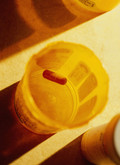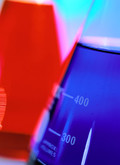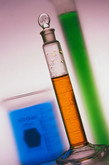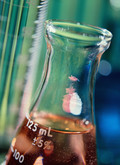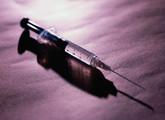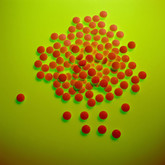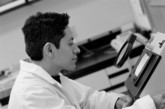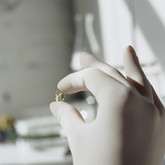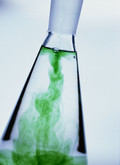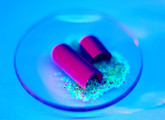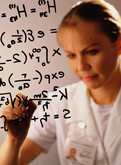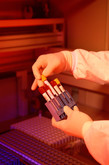Biosimilars/Research
Biosimilars dilemma over reference products
Global manufacturers of biosimilars have a dilemma on their hands concerning reference products. What to do to reduce the burden of data required in different countries and regions of the world to get their biosimilars onto the market?
Current and future issues surrounding biosimilars
Biological medicines are already becoming an increasingly important part of health care. With patent expiries on originator biological products, biosimilars are also increasingly become a part of this future [1]. In fact, by 2020 twelve of the top-selling biologicals will have lost patent protection, opening up an estimated US$24 billion in EU sales and US$30 billion in US sales [2].
Reimbursement of biosimilars
The evidence required to obtain marketing authorisation for a biosimilar by the regulatory authority is not always the same as that required by the reimbursement authority [1]. This can cause problems for biosimilars manufacturers when planning clinical trials in order to obtain both marketing and reimbursement approval.
Comparability studies and substitution of biosimilars
In order to demonstrate similarity between the biosimilar and the biological reference product, both products must be compared to satisfy quality, safety and efficacy requirements [1].
Biosimilars: demonstrating ‘similarity’
Most biological drugs are mixtures of closely related compounds, some of which are probably more active than others. Today, the state-of-the-art manufacturing struggles to deliver material that is similar to the prior batch from the same facility and team [1]. Identical is currently not possible, therefore ‘similar’ is the route that authorities in Europe and the US are going down.
Registration of biosimilars in Europe and the US
Europe is way ahead of the US in terms of biosimilars regulation. A legal framework for approving biosimilars in the EU was established in 2003 and guidelines for an abbreviated registration process were issued in 2006 [1].
EMA risk management plans may increase prescriber confidence in biosimilars
In the absence of observational (phase IV) data, EMA’s stipulation that all marketing applications for new generation biosimilars contain individual risk management plans may help to increase prescriber confidence in the compounds [1].
The cost-effectiveness of biosimilars
The biotechnology market is growing rapidly, driven by the imminent patent expiry of several major biologicals and enabled by the establishment of regulatory frameworks. The key driver for the biosimilars market is likely to be cost containment pressures in healthcare systems in the context of aging populations and of the current financial and economic crisis [1]. Because the medicines involved are so expensive, even a modest price reduction in percentage terms generates savings in the billions of euros over the EU as a whole [2].
Physician perceptions of generics substitution
How do physicians perceive generics substitution? Many patients do not communicate with their physicians regarding out-of-pocket expenses or medication choices. Therefore, understanding physicians’ perceptions about the quality and efficacy of generics could help to identify potential barriers to increasing the use of generic drugs [1].
Biosimilar epoetins: how similar are they?
As the patent expiry dates of the original erythropoietins drew near, much concern was expressed in 2004 about possible biosimilar competitors. Product quality, safety and efficacy of biopharmaceuticals are highly dependent on the processes of production, purification and formulation. How have these genuine concerns been answered by the EMA in granting marketing approval, and have any other problems come to light?
Relative effectiveness and cost minimisation for biosimilars
The second of two articles on the use of economic evaluations to guide the use of expensive treatment.
Economic evaluation of biosimilars
Biological drugs represent a fast-growing segment of the pharmaceutical market. They make up 32% of drugs in the development pipeline and 7.5% of marketed medicines and account for around 10% of pharmaceutical expenditure [1].
India at the biotech crossroads
‘Indian biotech is at a crossroads. It must not only address the significant health needs of its domestic population, but also position itself to take advantage of the often more profitable global marketplace.’ [1]
Interchangeability (switching and alternating) of biosimilars
The Biologics Price Competition and Innovation (BPCI) Act of 2009 established an abbreviated Biologic License Application (aBLA) pathway for the approval of biosimilars in the US. This act also established the principles of interchangeability (along with switching and alternating) with the reference product. However, the concept of biosimilarity and interchangeability for biosimilars is very different from that of bioequivalence and drug interchangeability for generics [1].
Quantitative evaluation of bioequivalence
Generics
For approval of small molecule generics, FDA requires that evidence of average bioequivalence in drug absorption in terms of pharmacokinetic (PK) parameters be provided through the conduct of bioequivalence studies. This may be done using the area under the blood and/or plasma concentration-time curve and peak concentration (Cmax) [1].
US cancer researcher calls for additional biosimilar trials
One of the leading cancer researchers in the US has called for biosimilars manufacturers to undertake additional research. In an interview with The ASCO Post, Professor Mark Pegram, MD, Professor of Medicine and Associate Director for Clinical Research, Sylvester Comprehensive Cancer Center at the University of Miami Health System, Florida, USA, said, ‘Oncologists will be concerned about the safety of biosimilars. They will want to ensure that the chemistry, manufacturing, and composition are on par with the labelled product.’
US biosimilars: many barriers to overcome
EMA has been successful in devising a system for authorising the marketing of biosimilar products and 14 biosimilars are currently on the market in the major countries of the EU [1]. Generally, biosimilars are priced about 30% less than the originator product. This seems to be sufficient to gain significant (~ 30%) market share in a year or two though it keeps biosimilars very expensive. This is in dramatic contrast to the situation in America. In 2010 the ‘biosimilars statute’ (BLA) eventually came into force as the result of the Patient Protection and Affordable Care Act. The proposed rule involves two particularly onerous requirements that the EU process avoids.
The first is the question of degree of similarity.
Can biosimilar manufacturers learn from generic substitution issues
The substitution of generic prescription medicines for branded medicines is practiced in most Westernised countries, mainly because of its clear economic benefits. Patient experiences of generic substitution are mixed however, with many patients left confused or suspicious [1]. Given that a number of second-generation biosimilar compounds are expected to be approved within the next few years, and that biosimilar manufacturing costs are much higher than those of a simple generic, it is crucial for biosimilar manufacturers to avoid the uncertainty and mistrust that often accompanies generic substitution. Several recommendations have been made to help ensure that substitution pathways are streamlined and successful [1] but can any of these recommendations be applied to biosimilars?
US biosimilars: a report on FDA progress
This article reviews the steps being taken by FDA to implement the Biologics Price Competition and Innovation (BPCI) Act of 2009, enshrined in law in 2010 as the ‘biosimilars statute’.
Development of biosimilars is not an easy matter
By 2020 biological products with sales of around US$23 billion in the EU and US$29 billion in the US will be exposed to biosimilar competition [1]. As more and more biologicals lose their patent protection, it is no wonder that Big Pharma, the biotechnology industry and generics manufacturers, as well as regulatory agencies, are becoming increasingly interested in biosimilars [2].
